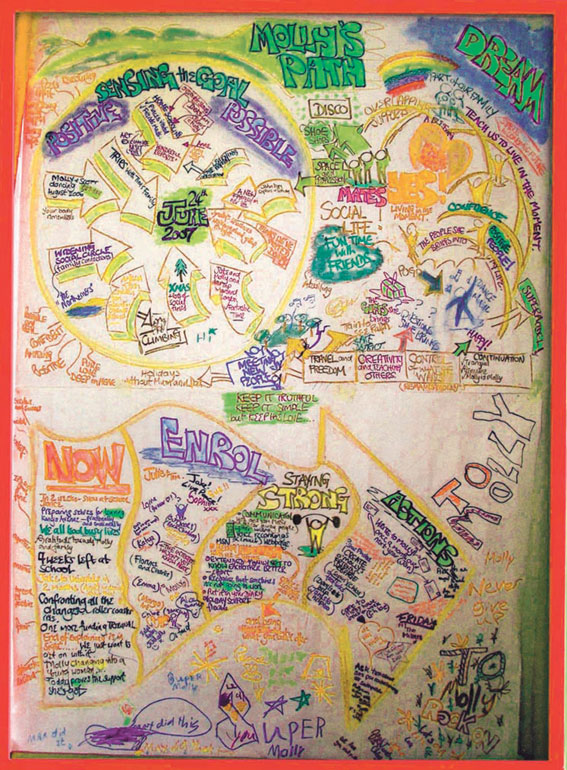Molly’s Path
Angie Northwood talks about her daughter Molly and working with Inclusive Solutions on a learning path for her.
 Back in 2005 Molly was 11 years old at her secondary school transfer stage. She had had an additional year in nursery class at her local mainstream primary school. Initially we had been of the view that Molly would transfer to our local mainstream secondary school along with the majority of her class mates and friends.
Back in 2005 Molly was 11 years old at her secondary school transfer stage. She had had an additional year in nursery class at her local mainstream primary school. Initially we had been of the view that Molly would transfer to our local mainstream secondary school along with the majority of her class mates and friends.
We were fortunate that the SENCO at the primary school was a great ally and advocate. We had planning meetings with her to put together our ‘strategy’ and ‘presentation’ for the impending interview with the SENCO at secondary school. We felt confident, having seen how beneficial inclusion was, not only for Molly but for the whole school.
The interview did not go well. The secondary school SENCO was not inclusive, she was unimpressed with Molly’s achievements, with the tools and strategies the primary school had implemented, unimpressed that behaviour in her class had improved because she was a calming influence, unmoved by the fact that her friends were transferring to the school and that continuity would be hugely supportive to her. In fact the first question she asked us when we had presented our views was “Can Molly line up?”
We had to reconsider what next for Molly. Special school was not an option. The local Steiner school to my surprise was also not inclusive. So what next!?
I happened to bump into a parent I had previously supported some years ago when she was battling to get her son into her local primary school. We exchanged our stories of how things were working out or not and she asked me if I had considered Home Education. I had not. I hadn’t heard of it.
I went straight home and began my research. I looked into the aspects of the law and parent rights. I looked into what support was available for a child with a Statement – none as it happens. I then looked at the Education Otherwise website and I was thrilled. The stories from parents of children with ‘special educational needs’ were inspiring.
By then the secondary school had made Molly an offer to attend for just one hour per day. Needless to say, we said “no thanks”. And laughed all the way home to begin planning how we would provide an education for Molly that would support her growth as an individual and as part of her community.
Our first step was to ask Colin and Derek from Inclusive Solutions to do a PATH for Molly. And so, the summer in which she left primary school we gathered together, friends, family and allies and together created a beautiful PATH for her and a great support mechanism for us. Looking back now we can clearly see how seeds for the future were planted. It was not only beneficial for those first tentative steps away from the ‘system’ but also as a reference point in moments of being stuck or bewildered and a validation of the choices we made to ensure Molly continued inclusion.
It took time for us all to adapt. There was grief of the loss of the familiarity of her routine and regular contact with friends. There was no support, there was monitoring– which we were able to handle because I knew the system and the people doing the monitoring. It took time to trust other parents in the home ed community. Largely, parents did seem to be inclusive. But I felt isolated without the network of support I had created while Molly was in school. Molly adapted better and quicker than me and my husband! Over time she and I made some good friends which led us to going to a Home Education Summer Camp in West Wales. A few years later we moved there.
This really is an inclusive community. Molly has an awesome social life. She has freedom of movement and self-expression in abundance. We know that when she goes out with her friends she is safe, people look out for her, they care about her, they love her company. Our lives are abundant now and full of hope for her future beyond us.
![ALLFIE [logo]](https://www.allfie.org.uk/wp-content/themes/allfie-base-theme/assets/img/allfie-logo-original.svg)



